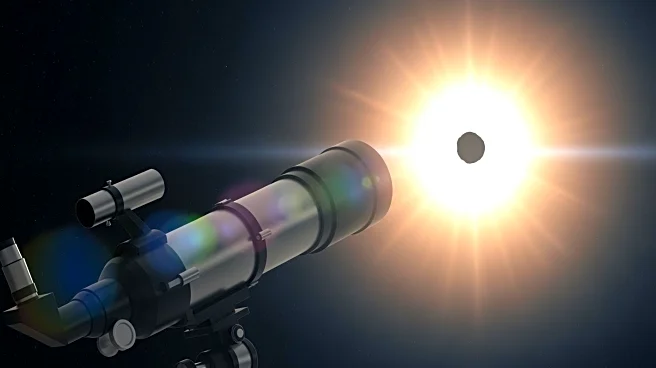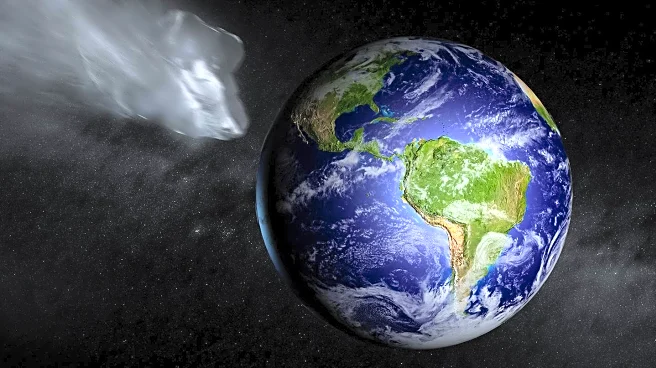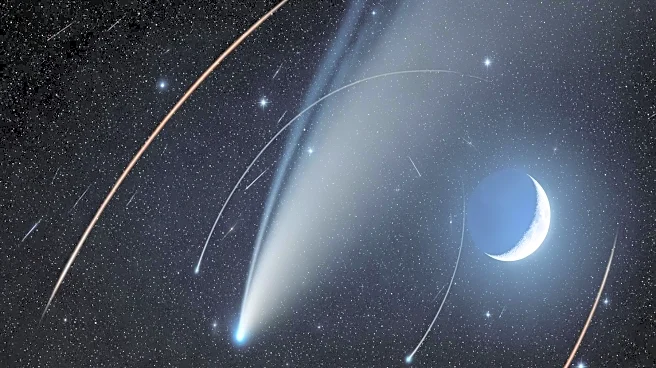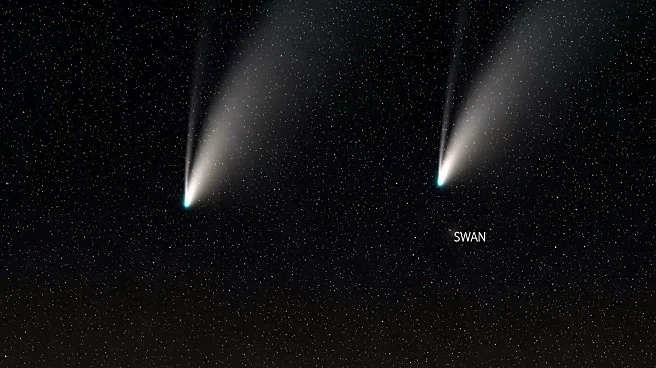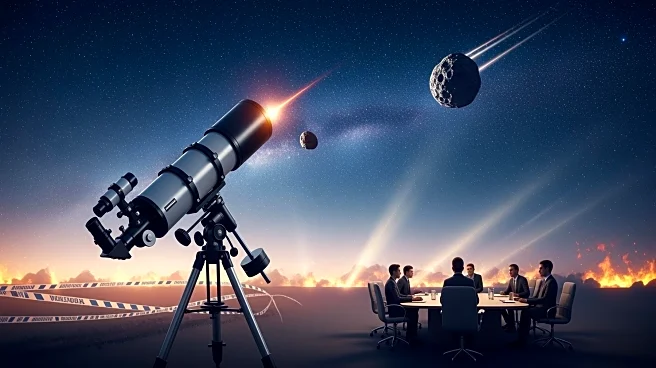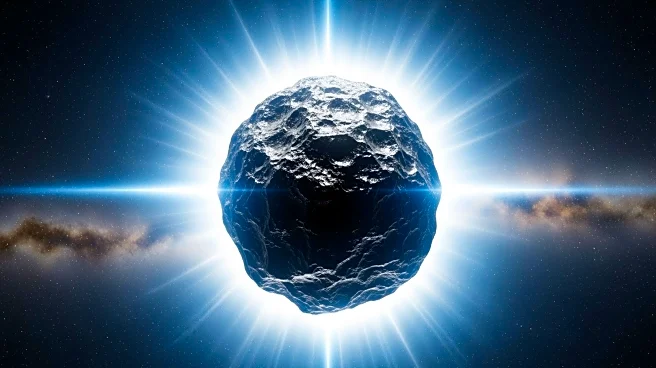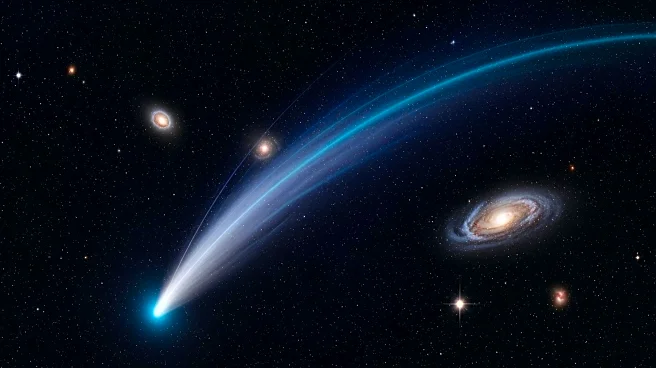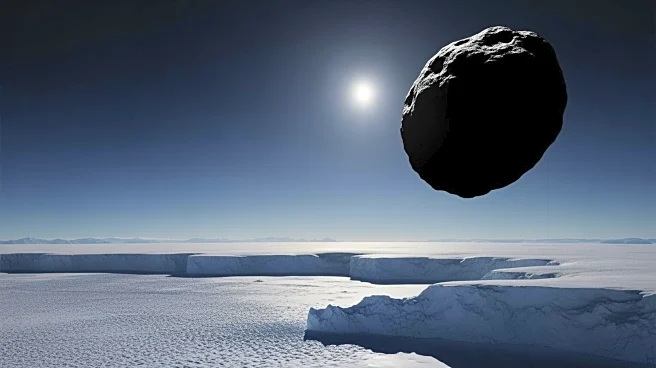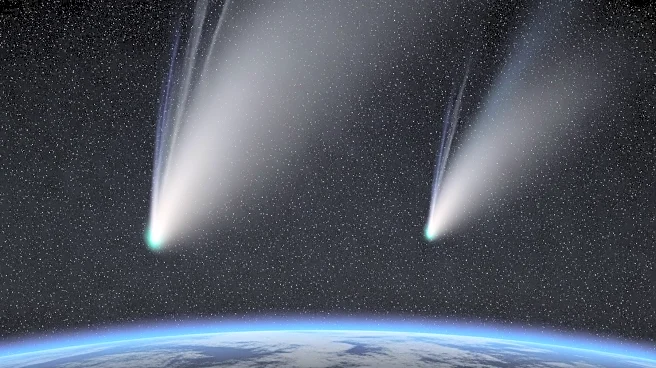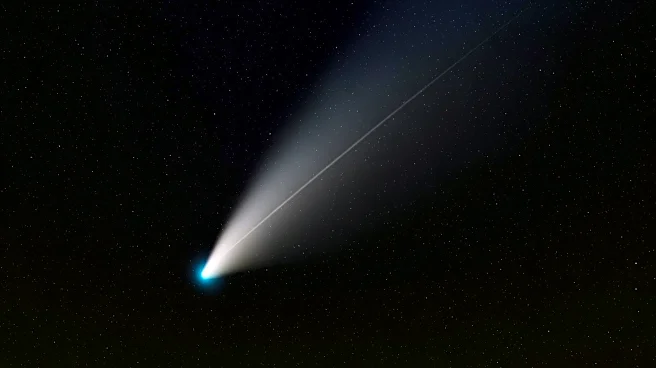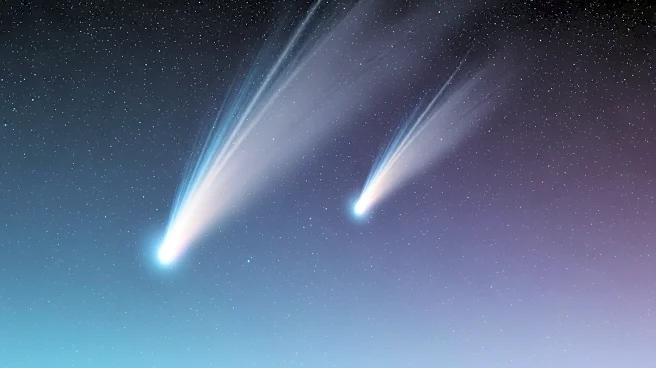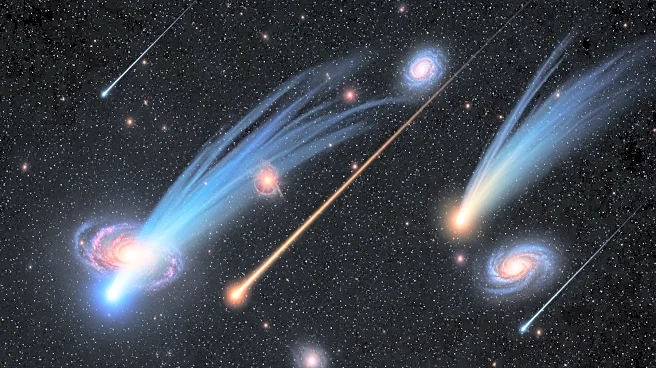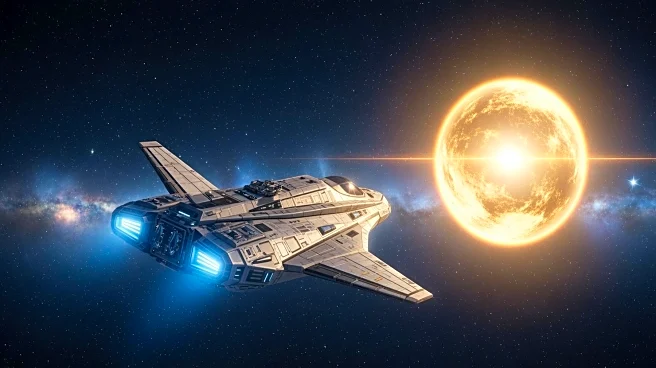What's Happening?
Astronomers have identified a new asteroid, 2025 SC79, which measures approximately 2,300 feet wide and was previously obscured by the sun's glare. This asteroid completes an orbit around the sun every 128 days, making it the second-fastest known asteroid orbiting
within our solar system. It is one of only two known asteroids that orbit entirely inside Venus' orbit, occasionally crossing Mercury's orbit. The discovery was made by Scott Sheppard, an astronomer at the Carnegie Science research institute, using the Dark Energy Camera on the National Science Foundation's Blanco 4-meter telescope. The asteroid's existence was confirmed through observations from the NSF's Gemini telescope and Carnegie Science's Magellan telescopes. The identification of such 'twilight' asteroids is crucial as they can pose serious impact hazards if they approach Earth.
Why It's Important?
The discovery of 2025 SC79 is significant due to the potential threat it poses to Earth. Asteroids that are difficult to detect, especially those hidden by the sun's glare, can be dangerous if they approach our planet. The size of 2025 SC79, comparable to a skyscraper, highlights the importance of monitoring such celestial bodies. Understanding the trajectories and characteristics of these asteroids can help scientists develop strategies to mitigate potential impacts. Additionally, studying these asteroids provides insights into the history and evolution of our solar system, aiding in the protection of Earth and enhancing our knowledge of space dynamics.
What's Next?
The orbit of 2025 SC79 has now taken it behind the sun, making it invisible for several months. Researchers plan to conduct further observations in the future to gather more information about the asteroid. These efforts will contribute to a better understanding of its trajectory and potential impact risks. Continued monitoring and research are essential to ensure that no hazardous asteroids go unnoticed, allowing for timely interventions if necessary.
Beyond the Headlines
The discovery of 2025 SC79 underscores the challenges astronomers face in detecting asteroids that lurk near the sun. These 'twilight' asteroids require specialized observation techniques, as they can only be seen during specific times when the sun is about to rise or set. The study of such asteroids not only helps in planetary defense but also enriches our understanding of the solar system's formation and the dynamic processes that govern celestial bodies.
